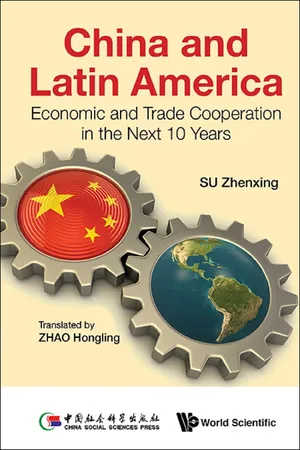Economics
Argentine Great Depression
The Argentine Great Depression refers to a severe economic crisis that occurred in Argentina between 1998 and 2002. It was characterized by a sharp decline in economic activity, high unemployment rates, and a significant devaluation of the Argentine peso. The crisis was triggered by a combination of factors including fiscal mismanagement, currency pegs, and external debt.
Written by Perlego with AI-assistance
Related key terms
1 Key excerpts on "Argentine Great Depression"
- eBook - ePub
China And Latin America: Economic And Trade Cooperation In The Next Ten Years
Economic and Trade Cooperation in the Next 10 Years
- Hongling Zhao, Zhenxing Su(Authors)
- 2017(Publication Date)
- WSPC(Publisher)
Both from the perspective of size and magnitude, the proposed re-nationalization of the past 10 years cannot be compared to the privatization process in the 1990s; therefore, it is hard to draw a conclusion about the impact on the domestic economy. For now, the biggest benefit for the government is the nationalization of the pension system, and one of the examples of successful nationalization is the Argentina Post Office becoming out of the red after being nationalized. However, the continued implementation of nationalization could weaken the confidence of the investors in the short term and cause some negative impact on the inflow of foreign capitals.IV.Dealing with the Financial Crisis and the Current Problems
From 2008 onwards, there had been some changes in the Argentine economy. First, the external conditions of the economic growth had been changed by the international financial crisis and began to have impact on the domestic economy. Secondly, the ending of the term of the Kirchner government marked the completion of its task to lead the Argentine economy to recovery. The several years of economic reform practice had basically established the features of the new mode of growth, and the development of the domestic economy gradually went onto the right track. However, some problems began to come out and present new challenges for the sustainability of growth. Below, we will offer an analysis of the main problems affecting the Argentine economy and the government’s countermeasures in the last 10 years from both the external and internal perspectives.1.Dealing with the Global Financial Crisis
From the beginning of the second half of 2008, the impact of the global financial crisis on the Argentine economy was gradually emerging, but owing to the smooth running of the economy in the first half of that year, the annual economic growth still reached a high level of 6.8%. In 2009, the impact of the financial crisis turned exacerbated, causing Argentina’s failure to continue to maintain high growth for six consecutive years — the annual GDP growth was only 0.9%.35 In 2010 and 2011, the Argentine economy achieved a strong recovery — the annual growth rate reached 9.2% and 8.9%, respectively. In 2012, affected by the global economic downturn and a weak Brazilian economy, the economic growth of Argentina was slowing down, with an annual GDP growth of only 2.2%,36
Learn about this page
Index pages curate the most relevant extracts from our library of academic textbooks. They’ve been created using an in-house natural language model (NLM), each adding context and meaning to key research topics.
